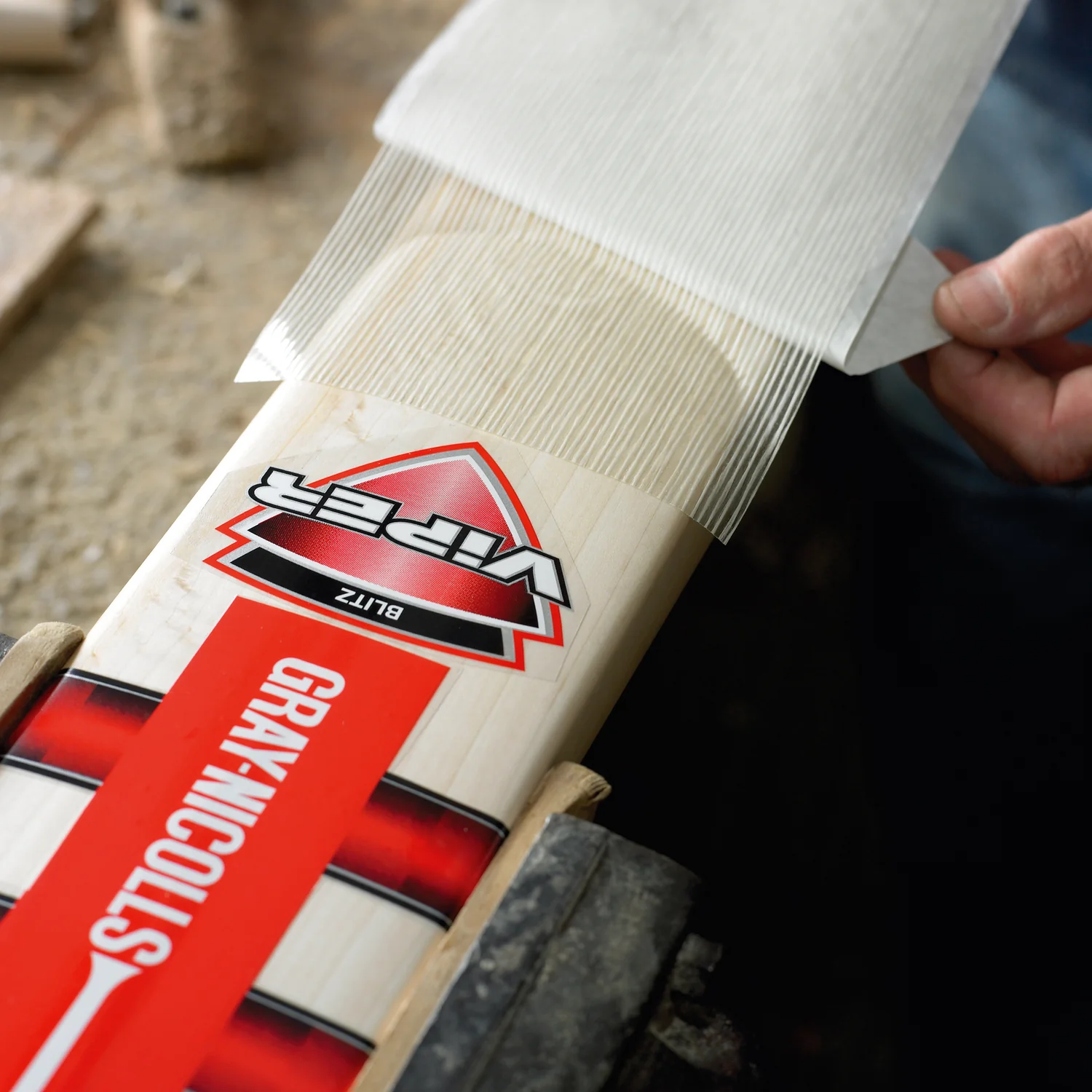
The Importance of Scuff Sheets for Cricket Bats
We all share a deep-rooted passion for cricket, and our cricket bats are more than just pieces of sports equipment; they are trusted companions in every match we play. Today, we'll discuss a crucial aspect of bat care that often goes unnoticed - the use of scuff sheets. We will delve into the differences between clear and fibre scuff sheets and why it's essential to shield your willow with one.
The Need for Scuff Sheets
Whether you're a seasoned cricketer or a novice stepping onto the field, it's imperative to understand that the cricket bat is susceptible to wear and tear. The repeated impact from the cricket ball can lead to surface damage, cracks, and eventually, decrease the bat's lifespan. Here is where scuff sheets come to the rescue.
A scuff sheet, a thin protective layer applied to the bat's face, acts as a barrier between the bat and the ball. This shield not only minimises direct impact damage but also reduces the risk of moisture absorption, thus preserving the bat's integrity and performance.
Clear Scuff Sheets
Clear scuff sheets are the most common type used by cricketers worldwide. Made from a thin, transparent, self-adhesive polymeric material, they are designed to blend seamlessly with the bat's surface. The primary purpose of a clear scuff sheet is to offer a safeguard against surface-level damage.
The advantages of a clear scuff sheet include:
- Visibility: Being transparent, they allow the natural grains of the bat to be seen, which many players prefer aesthetically.
- Weight: Clear scuff sheets are incredibly lightweight, ensuring they don't interfere with the bat's balance or performance.
- Protection: They provide a good level of protection against minor dings and scratches, keeping your bat looking new for longer.
Fibre Scuff Sheets
Fibre scuff sheets, on the other hand, are composed of a thin layer of fibreglass. They are known for providing a higher level of protection compared to their clear counterparts.
Here's why fibre scuff sheets can be a good choice:
- Durability: Fibre scuff sheets offer superior protection against ball strikes, reducing the risk of deep-seated cracks.
- Moisture Resistance: They are more effective at preventing moisture absorption, a crucial factor in maintaining the longevity of your bat.
- Resilience: Fibre scuff sheets are more resistant to tearing, ensuring a long-lasting shield for your bat.
It's worth noting that fibre scuff sheets, due to their material, can add a slight additional weight to your bat. They are also opaque, which means the natural grains of your bat won't be visible.
Choosing the Right Scuff Sheet
Selecting between clear and fibre scuff sheets ultimately boils down to your personal preference and playing conditions. If maintaining the natural look of your bat is a priority and you're not playing in harsh conditions, a clear scuff sheet should serve you well. However, if you're playing regularly and in various weather conditions, or your bat has a history of damage, you might want to consider the enhanced protection offered by a fibre scuff sheet.
Application Process
Applying a scuff sheet is a straightforward process. Here's a simple step-by-step guide:
- Clean the Bat: Make sure your bat is clean and dry before application. Any dirt or moisture can hinder the adhesive and affect the sheet's performance.
- Apply the Sheet: Start from the top (below the splice) and slowly roll the sheet down the face of the bat, making sure there are no air bubbles. Press firmly.
- Trim the Excess: Once you're satisfied with the positioning, trim off the excess at the bottom with a sharp knife or scissors. Be careful not to damage the bat.
- Smooth Out: Use a soft cloth to smooth out the sheet, ensuring it adheres well to the bat's surface.
Final Thoughts
Remember, a scuff sheet is not a permanent solution to bat damage. Regular inspections for any deep scratches or cracks are still necessary. If you notice significant damage, it might be time to replace the sheet or seek professional help for bat repair.
Moreover, while a scuff sheet provides substantial protection, it's equally important to follow other bat care tips such as knocking in your bat properly before use, storing it in a cool, dry place, and not using it to hit hard objects other than a cricket ball.
In the grand scheme of cricketing, the scuff sheet might seem like a small detail, but it can make a big difference. So, take that little extra step. Protect your cricket bat, protect your game.